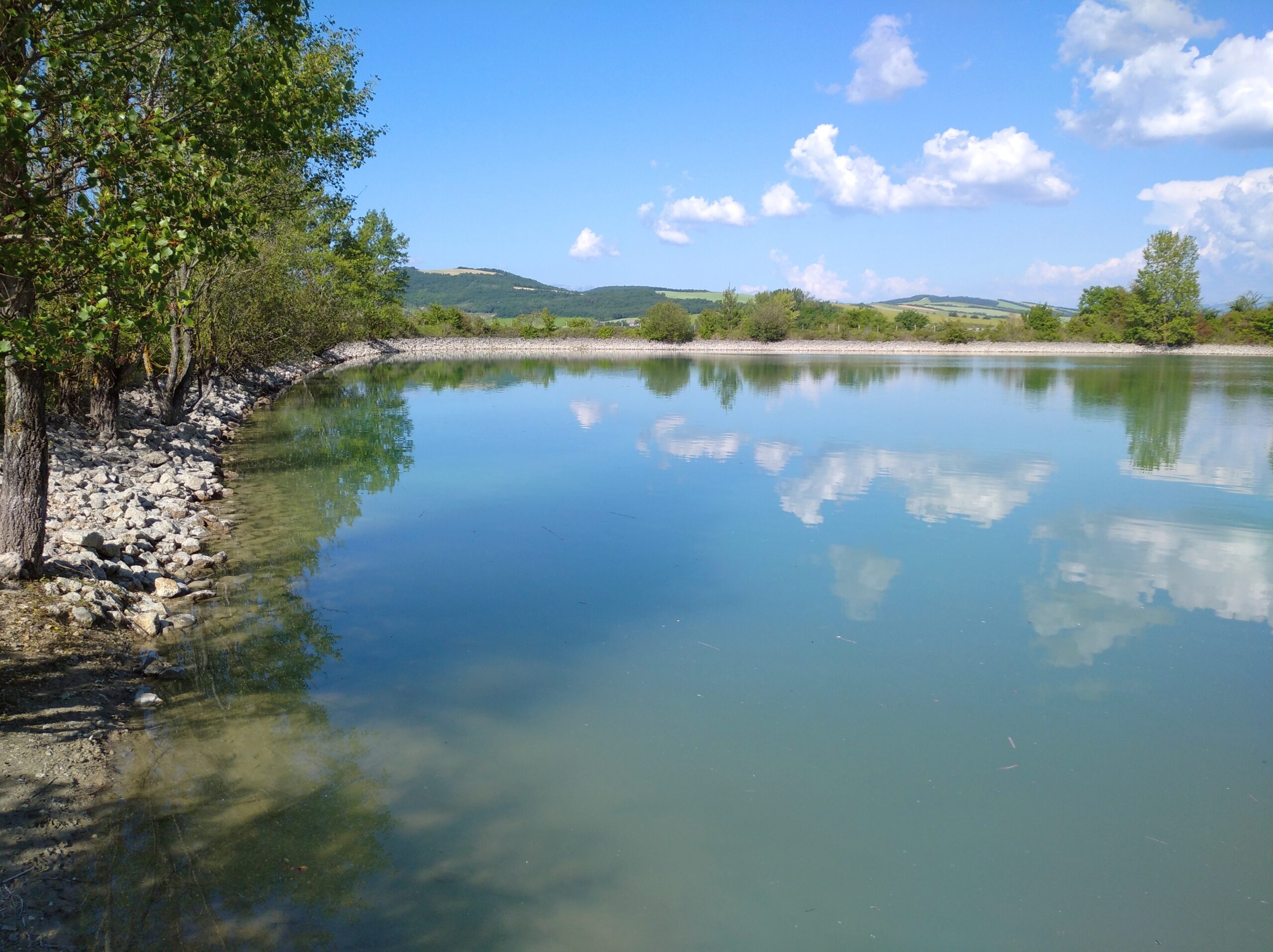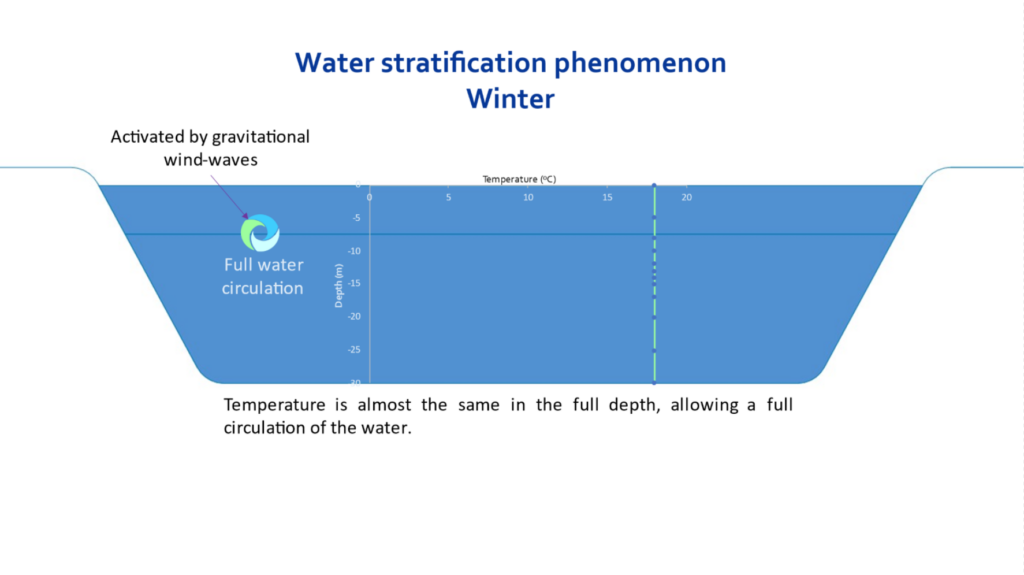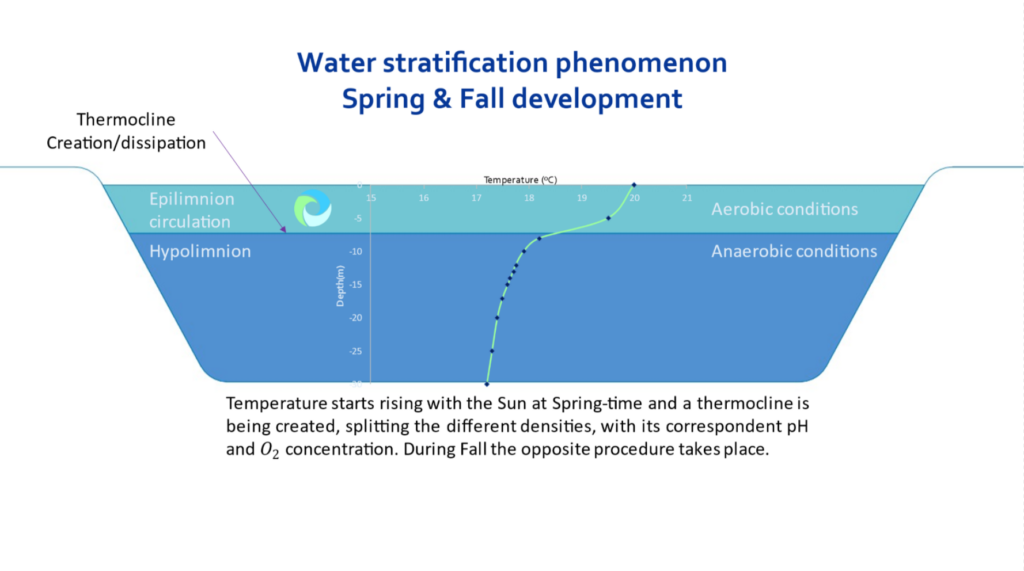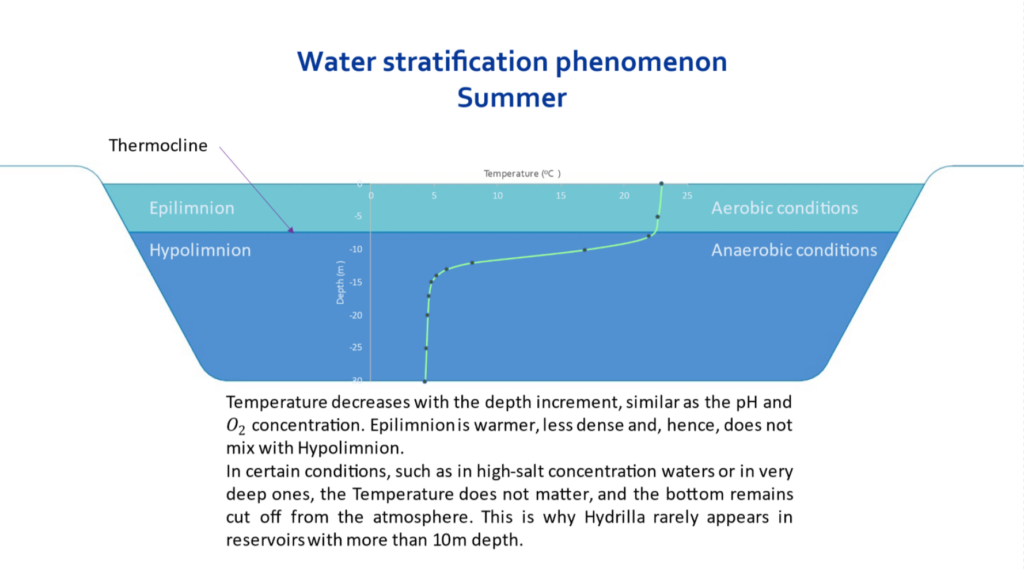
Why neighbor’s raft doesn’t have aquatic plants?
On many occasions we can see aquatic plants that do not stop growing in our rafts. This type of vegetation increases the generation and deposition of slof, which can be harmful as we will see below.
One of the most well-known plant in this regard is hydrila. It is a tremendously difficult plant to eliminate, cutting it is useless and the use of chemicals is complex at an environmental level.
The following figures try to explain, from a point of view of the thermodynamics, chemistry and kinematics of the rafts, the behavior of the water that allows or does not allow the growth of this type of species.

During winter, the temperature profile along the entire depth, both in deep water and in shallow water (<15m), remains constant. Waves caused by the wind remove the water so that the low air temperature mixes and stirs with that of the bottom. In deep rafts where daylight does not strongly shine, the water temperature remains practically constant all year round.

In spring, sun’s elevation causes higher temperatures and generates the surface of the water reaches a warmer temperature by direct radiation from the sun and by convection of that warmer air. A division between the Epilimnion and the Hypolimnionthenoccurs, called thermocline (in some bibliographies this line is actually a transition zone for greater precision, known as metalimnion). In the area where there is a higher temperature, oxygen also increases, due in part to the agitation of gravitational waves. Therefore, aerobic conditions are created, while at the bottom, the temperature remains low and the conditions anaerobic.

Finally, in summer, there is a greater contrast in the thermocline, which generates an area of high biological activity due to the high temperature. Obviously, the shallower the raft, the greater the percentage occupied by the Epilimnion. This shows that, if the raft reaches a critical depth determined for each plant species, the Epilimnion zone could make the bottom have adequate conditions for its growth and thus cause the development of aquatic plants, especially in summer seasons.
That is why Emica Solar offers solutions not only for surface coverage, but also for ultrasonic treatment and other technologies that attack the roots, since cutting or cleaning them only has a temporary effect until new spores are deposited at the bottom of the shallow rafts.


